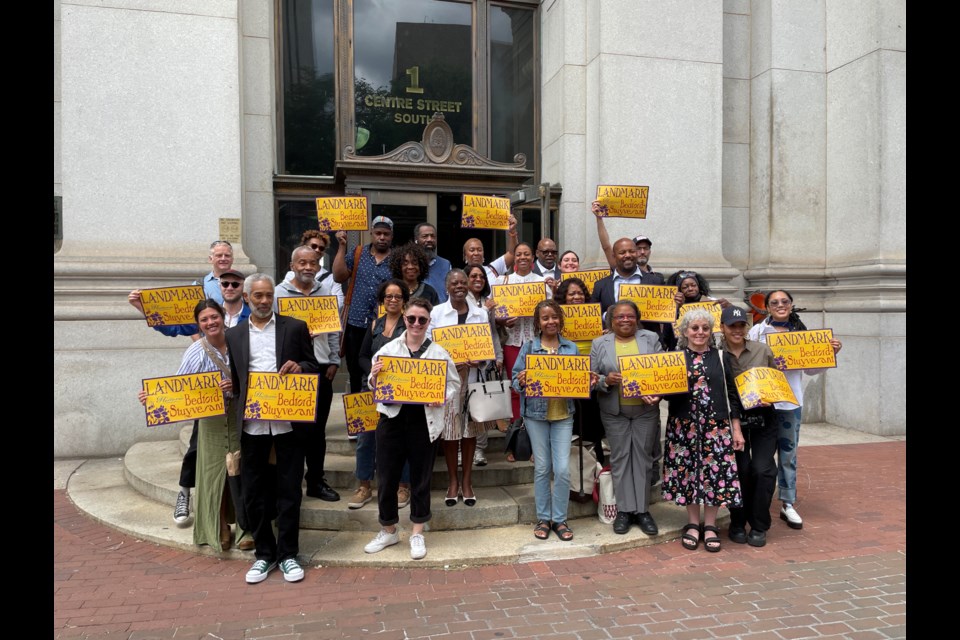Thirty-two years since being designated as an area of interest by the Landmark Preservation Commission (LPC), a part of northern Bedford Stuyvesant is taking bigger steps to be officially landmarked as a historic district.
On Tuesday, the LPC held a public hearing where nearly 30 residents and supporters of The Willoughby-Hart Historic District testified why the area should be landmarked.
Hart and Willoughby Streets, between Nostrand and Marcy Avenues, is known for its brownstones built in the Neo-Greco, Second Empire and Romanesque Revival styles, and many of these were passed down from one generation to another, including many Black families.
If approved, it will become the fifth area in Bed-Stuy to be designated as an official historic landmark, following Bedford-Stuyveant Historic District (HD), Stuyvesant Heights, Bedford Stuyvesant/Expanded Stuyvesant Heights, and Alice and Agate Courts.
During the hearing, many spoke passionately about why the LPC should strongly consider landmarking the two blocks.
"It's time. It really is that simple," said resident Dr. Charyl Pitts-Howard. "Willoughby and Hart is like a garden. And the buildings, like these beautiful flowers, and the people have been their caretakers. And then you stepped in and you've given us the hope and the joy that we can now take it to even the next level."
Pitts-Howard also said her daughter urged her to tell the commission that the two blocks resembles the TV show Sesame Street in look and feel.
"I think that just based on the architecture we deserve it," said Paula Lee Poy, a resident who spoke to BK Reader ahead of the hearing. "And to be able to keep the history and the brownstones intact, it feels very important. To the city as well, not just us, as residents."
The hearing was not without tensions. Real estate attorney Adam Leitman Bailey, who said he was representing dozens of Orthodox Jewish families who owned homes in the area, noted the buildings did not deserve landmarking status.
"Never in the history of the United States of America has a body voted to remove this many Jews from its streets," Bailey said.
He also added: "They want a community without Jews," to loud gasps from the audience in the room.
Bailey said his clients have been threatened and asked to leave. He explained that the landmarking campaign is a type of "housing discrimination" because Orthodox Jewish families will not be able to expand their homes for their large families if the brownstones are designated as a landmark.
After he finished speaking, there was discord in the room, which caused one of the commission members to get up and calm things down.
A couple of speakers who identified as Jewish said they were appalled by Bailey's accusations. One said he "refused" any accusations of antisemitism. Other speakers said the two blocks are inclusive and everyone is welcome.
The hearing lasted nearly three hours, which also included people who spoke about their opinions on Zoom.
The LPC closed the hearing and said the next step will be the committee vote, although a specific date was not given.
Still, the Willoughby-Hart residents left the hearing in high spirits and optimistic about their campaign.
"I think the LPC was intently listening," said Pitts-Howard. "It was deeply moving to hear the stories connect to our community further."
Molly Salas, an active member of the historic designation campaign, said she was delighted by the turnout.
"It was great hearing from the legacy owners about their grandparents and great-grandparents. I think the LPC has seen the architectural aspects and that should be enough to designate us," she said.
Additional reporting contributed by Asar John.




